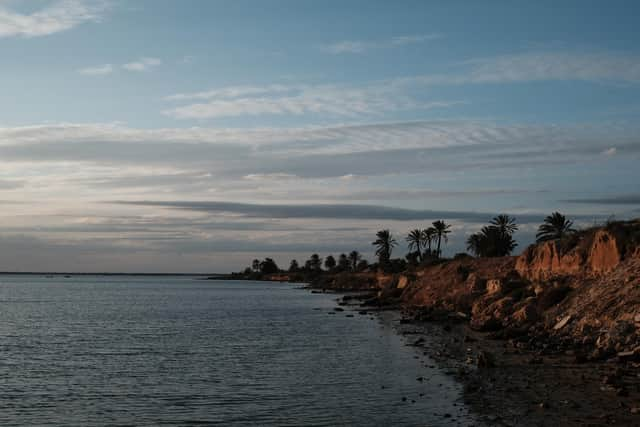COP26: Tunisian waters at the heart of climate change in Mediterranean
Yet, amongst others in the Mediterranean, the Tunisian coast is considered a climate change hot-spot and is today hit by rising sea levels, the increase of water temperature and all the consequences these changes imply for marine biodiversity.
“The greatest enemy of our coast is the rising water levels, directly linked to climate change,” explains Ahmed Ghedira, president of the NGO “Notre grand bleu”, ensuring the preservation of the Tunisian coastline since 2012.


Advertisement
Hide AdAdvertisement
Hide AdA study conducted by the National Agency for Coastal Protection predicts Tunisia risks losing almost one mile of its actual coastline by 2100.
Kaouther Ben Houidi, engineer at the Coastal Observatory, says: “Our coast is highly urbanised. Whether it is agriculture or industry, everything is concentrated there.”
The very emblematic islands of Kerkennah and Djerba and their white sandy beaches are in the frontline of these transformations.
With the rise of sea levels, seawater intrusion has already caused the groundwater to become saltier in parts of Tunisia, which is destroying vegetation at a rapid rate, according to experts.


It would also result in the loss of 53 per cent of coastal groundwater reserves.
In the Mediterranean region, the temperature is rising 20 per cent faster than in the rest of the world, according to a report of the Union for the Mediterranean. Last July, Tunisia experienced the hottest summer ever recorded.
The higher the temperature, the more evaporation there is and therefore the water becomes saltier.
By 2100, the seawater temperature is expected to rise up to 2.6C with a huge impact on biodiversity.
Advertisement
Hide AdAdvertisement
Hide AdBen Houidi warns: “The Mediterranean holds 10 per cent of the world's marine biodiversity. There are many endemic species that live in an ecological, niche which is very sensitive to variations caused by climate change.”
For instance, the reproductive cycle of the fish is seriously disturbed and the fishery does not adapt to these changes.
Too young, the fish is caught before reaching the reproductive age.
“This year we have noticed a radical change in the migratory path of tunas,” Ghedira says.
"Usually circulating through the southern Mediterranean shores, several specimens were found up north.”
The flip side of this change is the “tropicalisation” of the seas, with the introduction of new invasive species, who find in these thermal changes very favourable conditions for their development and settlement.
This is the case for a new crab population, sarcastically named ‘Daech’ – the term used for ISIS – by fishers.
"They eat everything, leave nothing and reproduce very quickly," says Najeh, a fisherman in the island of Kerkennah. Because of their voracity, these new species highly disrupt both the endemic biodiversity and the fishing economy.
Advertisement
Hide AdAdvertisement
Hide AdGhedira says: “There is a huge task ahead of us. There is no choice, but to adapt.
“Tunisia is not a big polluter and adapting to the changes is a lot of money. All our coastal infrastructures are threatened”.
One of his main workhorses is the creation of a fund for climate change adaptation projects. Ghedira says: “What is happening here is already happening everywhere in the Mediterranean. Climate change is real and we are in the middle of it”.
